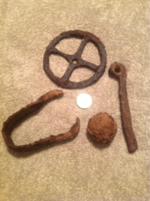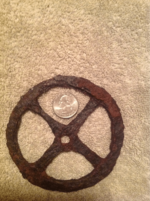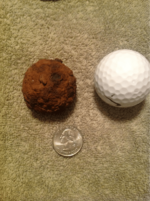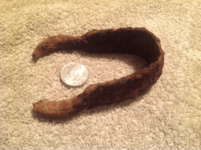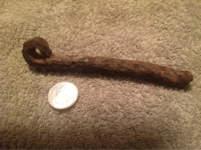Drew_dumas
Tenderfoot
- Aug 21, 2012
- 7
- 0
- Primary Interest:
- All Treasure Hunting
All found in close proximity to each other in an area known for civil and revolutionary war activity near savannah Georgia. Any ideas? Pretty sure the "cannon ball is part of a grapeshot round.


